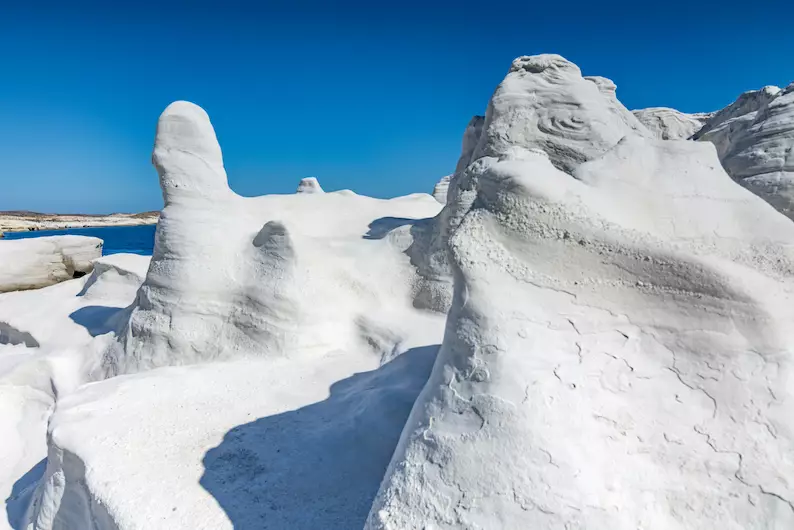Panoramic Milos
A short drive from the harbor takes us to Sarakiniko, an inlet of pure white stone sculpted by volcanic eruptions. This startlingly beautiful, otherworldly spot is one of the island’s many geological wonders and perhaps one of the most photographed places in the Cyclades. We’ll walk down to the inlet so you can experience this one-of-a-kind beach and take photographs. You’ll feel as if you’ve landed on the moon.
Half Day
Accessibility 3

Picturesque Bliss
We continue our drive along the dramatic Milos coastline toward Papafranga, a cluster of deep-sea inlets and sea caves at the base of a pristine ravine which, like Sarakiniko, was shaped by volcanic activity. We’ll linger for a short while at this picturesque locale, where you can peer down into clear turquoise waters and watch some rather adventurous tourists swimming and snorkeling in the caves at the bottom of the ravine.
Then we travel the picturesque main road along the coast to the cobblestone streets and alleys of Plaka, a classic Cycladic village of white stone houses and bougainvillea flowers 250 meters above the Aegean. We’ll stroll through the village to admire its traditional architecture and its stunning view of the sea, and we’ll sample some homemade sweets at a few of the village’s local pastry shops.
Very close to Plaka, next to Trypiti village, we will visit the ruins of ancient Melos and its Roman amphitheater, which is cut into the rocky slope of the hill near the ancient agora. There you’ll find large Dorian walls and column fragments. The marble amphitheater, fully restored in 2015, still includes seven intact rows of seats and offers a lovely view of the bay. Before we board the bus to return to the vessel, we will visit the site where the Venus de Milo (now residing in the Louvre in Paris), was discovered in 1820.


